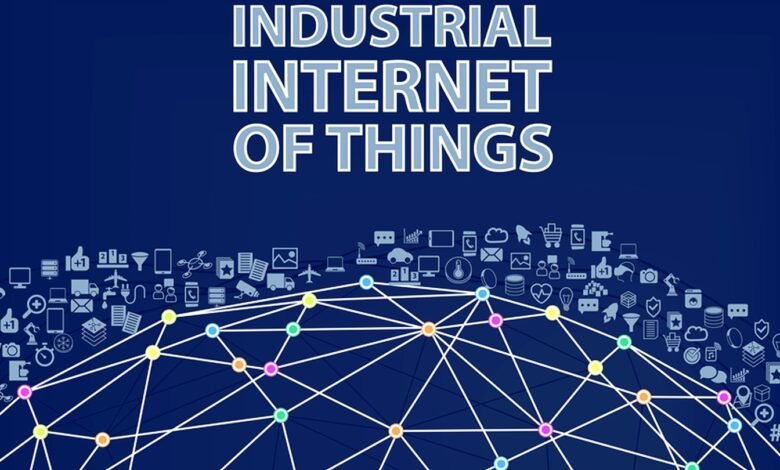
The year 2025 is poised to be a transformative period for the United Kingdom’s manufacturing sector, largely driven by the rapid advancement and adoption of Industrial Internet of Things (IIoT) technologies. As industries strive for greater efficiency, reduced costs, and enhanced productivity, Industrial IoT trends are emerging as a linchpin in the next generation of smart manufacturing. From predictive maintenance to digital twins, UK manufacturers are increasingly embracing innovative solutions that redefine how factories operate.
In this article, we explore the top Industrial IoT trends reshaping UK manufacturing in 2025, backed by detailed insights into their applications, benefits, and future outlook.
1. Predictive Maintenance Takes Centre Stage
One of the most prominent Industrial IoT trends is predictive maintenance. Traditional maintenance strategies often lead to unexpected downtime or excessive servicing. Predictive maintenance leverages IIoT sensors, machine learning algorithms, and data analytics to anticipate equipment failures before they occur.
In UK factories, predictive maintenance is reducing machine downtime by up to 30%, while also extending the lifecycle of expensive machinery. Real-time monitoring of parameters like vibration, temperature, and acoustic signals allows engineers to schedule maintenance only when necessary. This proactive approach is not only cost-effective but also enhances workplace safety and operational continuity.
2. Digital Twins Enabling Smart Simulations
Digital twin technology is rapidly gaining ground in UK manufacturing as a vital IIoT trend. A digital twin is a virtual replica of a physical asset, system, or process that simulates performance in real-time. By integrating IIoT data streams with AI models, digital twins offer real-time insights into system behavior, allowing manufacturers to test scenarios, predict outcomes, and optimize operations.
British manufacturers are using digital twins for everything from production line optimization to simulating supply chain disruptions. For instance, aerospace manufacturers in the Midlands are deploying digital twins to model jet engine performance, thereby improving fuel efficiency and reliability.
3. Edge Computing Reducing Latency in Smart Factories
Edge computing is another crucial Industrial IoT trend that is transforming UK manufacturing. Unlike cloud computing, which sends data to remote servers, edge computing processes data closer to the source—on the factory floor itself. This drastically reduces latency and enables real-time decision-making.
For manufacturers dealing with high-speed production lines or mission-critical processes, edge computing ensures minimal disruption and faster responses. Coupled with AI-driven analytics, this approach empowers smart factories to operate autonomously, responding instantly to changing conditions.
4. AI and Machine Learning Enhancing Industrial Intelligence
Artificial intelligence (AI) and machine learning (ML) are pivotal to Industrial IoT in 2025. These technologies analyze vast amounts of data generated by IIoT sensors to identify patterns, detect anomalies, and automate decision-making.
UK manufacturers are increasingly integrating AI-driven systems to improve quality control, streamline production, and reduce energy consumption. For example, automotive manufacturers are using AI to detect micro-defects on production lines, increasing yield and reducing waste.
The synergy between AI and IIoT allows for intelligent automation, where machines not only collect data but also learn from it to enhance performance.
5. Cybersecurity Becomes a Priority for Industrial IoT Ecosystems
With the rise of connected devices comes increased vulnerability. Cybersecurity is now a top concern among UK manufacturers leveraging IIoT. As networks of machines, sensors, and control systems become more integrated, safeguarding them from cyber threats is essential.
The UK government and industry bodies are pushing for stricter cybersecurity protocols, including encryption, device authentication, and network segmentation. By embedding security into IIoT frameworks from the ground up, manufacturers can prevent data breaches, intellectual property theft, and operational disruptions.
6. Sustainability and Energy Efficiency Through IIoT
Sustainability is no longer optional—it’s a competitive imperative. Industrial IoT trends are helping UK manufacturers track and reduce their environmental footprint. IIoT sensors monitor energy usage, emissions, and resource consumption in real-time, enabling data-driven sustainability efforts.
Many UK firms are implementing energy management systems powered by IIoT to optimize lighting, HVAC, and production equipment. This not only meets environmental regulations but also cuts costs and appeals to eco-conscious consumers and stakeholders.
7. Interoperability and Standardisation Gaining Importance
A major challenge in IIoT adoption is the lack of standardization across devices and platforms. In 2025, interoperability is a rising Industrial IoT trend in the UK manufacturing scene. Manufacturers are adopting open protocols and unified platforms to ensure that various machines and systems can communicate seamlessly.
Organizations such as the Industrial Internet Consortium (IIC) and the UK’s High Value Manufacturing Catapult are driving efforts towards standardized frameworks. This facilitates better data sharing, integration of legacy systems, and scalable IIoT deployments.
8. 5G Connectivity Accelerating IIoT Capabilities
The rollout of 5G across the UK is unlocking new possibilities for industrial IoT. With ultra-low latency and high bandwidth, 5G supports real-time communication between IIoT devices and systems. This is particularly valuable in complex, high-speed manufacturing environments.
For instance, robotic arms in automotive assembly lines can now communicate and adapt in milliseconds, thanks to 5G-enabled networks. This level of connectivity facilitates advanced automation, real-time monitoring, and improved remote operations.
9. Human-Machine Collaboration with Augmented Reality (AR)
Another emerging Industrial IoT trend is the use of augmented reality to enhance human-machine interaction. AR glasses and handheld devices overlay digital information onto the physical world, helping workers visualize data, receive guidance, and perform complex tasks more efficiently.
UK manufacturers are deploying AR in training, maintenance, and quality inspection. With IIoT feeding real-time data to AR systems, frontline workers gain instant access to machine status, step-by-step instructions, and remote expert assistance.
10. Supply Chain Visibility and Resilience Through IIoT
Supply chain resilience has become a critical focus post-Brexit and post-pandemic. IIoT provides real-time visibility into every node of the supply chain, from raw materials to end delivery. Sensors, RFID tags, and GPS tracking enable manufacturers to monitor shipments, predict disruptions, and respond proactively.
In 2025, UK firms are leveraging IIoT to optimize logistics, reduce lead times, and enhance customer satisfaction. Predictive analytics help anticipate demand fluctuations and manage inventory more efficiently.
Conclusion: Embracing the Future of Industrial IoT in UK Manufacturing
As the UK manufacturing sector faces increasing global competition and regulatory pressure, embracing the latest Industrial IoT trends is not just a choice—it is a necessity. From predictive maintenance and digital twins to 5G connectivity and AR-powered workflows, these technologies are empowering manufacturers to become smarter, more agile, and more sustainable.
The journey toward Industry 4.0 is well underway in the UK, and those who invest in Industrial IoT today will be best positioned to thrive tomorrow. By staying informed and adaptable, UK manufacturers can turn disruption into opportunity and lead the way in the digital industrial revolution.







